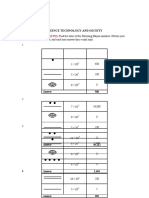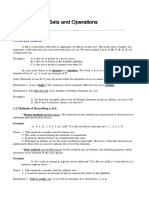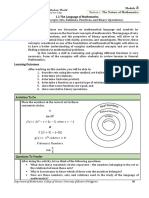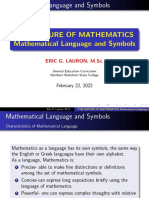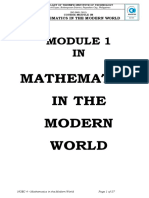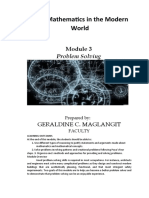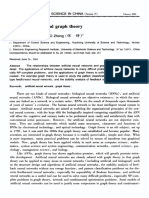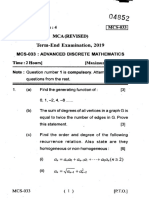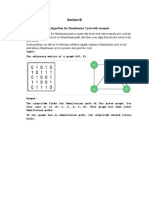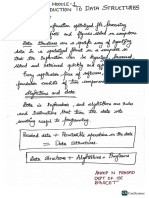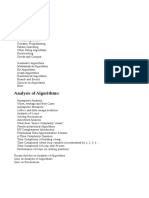0% found this document useful (0 votes)
191 views19 pagesMMW Module 6 Mathematics of Graphs
This document provides definitions and concepts related to graphs in mathematics. It defines what a graph is comprised of including vertices and edges. It also defines various graph terminology such as degree of a vertex, adjacent vertices, isolated vertices, loops, and different types of graphs. The learning objectives are to understand these graph concepts and be able to identify, construct, and differentiate between various graph structures.
Uploaded by
kurtkrystfur08Copyright
© © All Rights Reserved
We take content rights seriously. If you suspect this is your content, claim it here.
Available Formats
Download as PDF, TXT or read online on Scribd
0% found this document useful (0 votes)
191 views19 pagesMMW Module 6 Mathematics of Graphs
This document provides definitions and concepts related to graphs in mathematics. It defines what a graph is comprised of including vertices and edges. It also defines various graph terminology such as degree of a vertex, adjacent vertices, isolated vertices, loops, and different types of graphs. The learning objectives are to understand these graph concepts and be able to identify, construct, and differentiate between various graph structures.
Uploaded by
kurtkrystfur08Copyright
© © All Rights Reserved
We take content rights seriously. If you suspect this is your content, claim it here.
Available Formats
Download as PDF, TXT or read online on Scribd
/ 19


